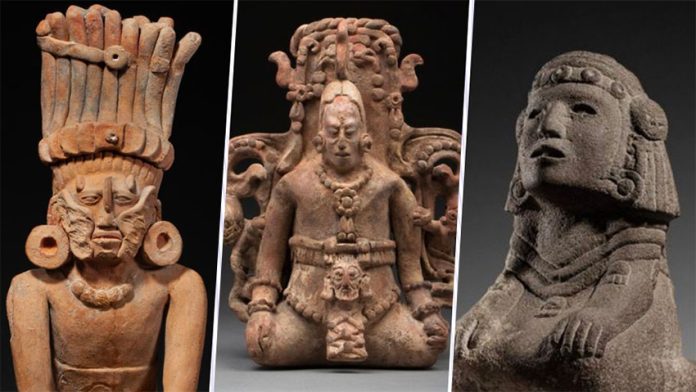Pre-Hispanic artifacts from Mexico are not only sold at international auctions such as the one held in Paris, France, last week: they’re also hawked on e-commerce sites and social media platforms such as Facebook.
The National Institute of Anthropology and History (INAH) has filed 21 criminal complaints with the federal Attorney General’s Office in the past five years for the illegal online sale of relics that date back to pre-Hispanic times.
Among the artifacts put up for sale online and detected by INAH are an anthropomorphic figure that was advertised on a Facebook marketplace and 41 archaeological objects listed on eBay.
A review of online market places by the newspaper El Universal found that several other archaeological relics are currently available for purchase.
On the e-commerce site MercadoLibre, 12 pieces from a pre-Hispanic shaft tomb that was presumably looted in Nayarit are on sale for 130,000 pesos (US $6,700), while a stone axe that was supposedly found at the site of the abandoned airport project in Texcoco, México state, is advertised for 800 pesos (US $40).
Also on sale on the same site is a supposedly 16th-century zoomorphic archaeological piece listed by a vendor in the Mexico City borough of Iztapalapa for US $40,000 and a small sculpture that, according to the seller, is a relic of the Zapotec culture and was found five meters beneath the surface of a field in Veracruz.
A pre-Hispanic necklace and an earthen “idol” are also up for grabs on MercadoLibre. According to the vendor, the pieces were found on a private property in the state of Colima.
Pre-Hispanic artifact dealers face stiff penalties if they are caught. Under federal law, a person convicted of illegally selling archaeological pieces faces a prison sentence of three to 10 years and a fine of up to 3,000 times the daily minimum salary, or about 306,000 pesos (US $15,700).
Carrying out archaeological excavations without permission from INAH carries the same penalties.
Source: El Universal (sp)
